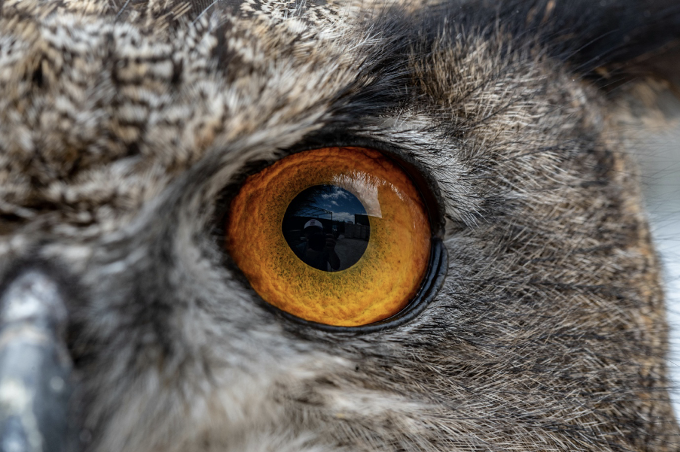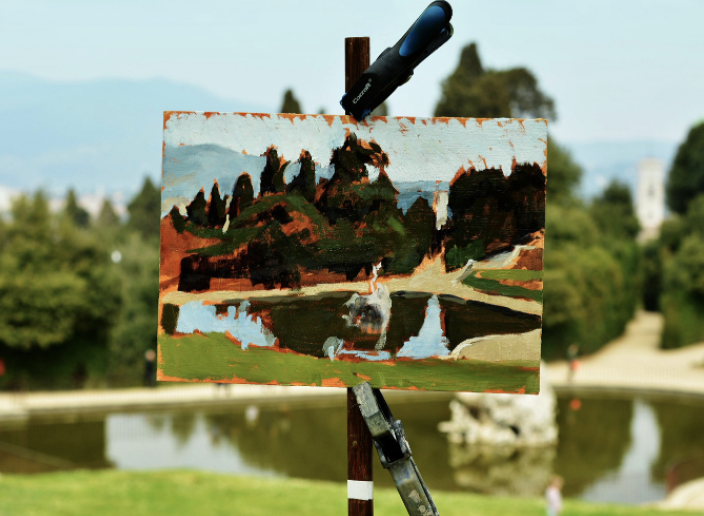This post is also available in Dutch.
Breaking rays of light
Except for blinking, we spend the full day staring out of our eyes. This extensive exposure makes the visual world feel familiar, yet we rarely notice its richness. What you see is a complex combination of various shapes, colours, textures, and the light source that sends it into your eyeballs. Every sensory system receives a mix of signals, but the resolution and granularity of visual information is much higher than what we feel, hear, or smell. As a result, visual percepts can differ from one another in myriad ways. Our brain must learn to make these differences, because visual confusion is as inconvenient as it is dangerous. For instance, you want to be able to differentiate between posters of aeroplanes and actual aeroplanes, between thoroughly cleaned and closed windows, and between tasty and poisonous mushrooms.
A superb set of eyes
Fortunately, as humans, we have a great set of eyes, allowing us to make such visual distinctions at the blink of an eye (faster even). The fact that our eyes are so capable, as with cameras and monitors, is a matter of resolution—the sharpness of visual information. Within the animal kingdom, our retina has, aside (predatory) birds, the highest density of photoreceptors: light-sensitive cells that pick up visual information and translate it into neural signals. The higher this density, the more precisely you can piece together the visual world and resolve perceptual ambiguity. For instance, birds of prey can distinguish mice from pebbles at skyscraper-height with ease.

Polished thumbnail
Yet the power of our eyes is only partly due to the resolution of incoming visual information. This is because we only receive razor-sharp input in a tiny patch (far less than 1%) in the middle of our visual field, as small as your thumbnail at arm’s length. Our impressive photoreceptor density is only found in this middle part of the retina; outside of it, photoreceptors become sparser and our vision less precise. The number of colour-sensitive photoreceptors (‘cones’) decreases so strongly that their distribution across the retina is shaped like a stalagmite. In contrast, the distribution of light-sensitive photoreceptors (‘rods’) across the retina is more reminiscent of a volcano: a gradual hill with a deep rod-less valley in the middle. Hence, within this region our vision is sharp and colourful, but right on the outside, it starts getting increasingly blurry and devoid of colour.

Hypothetical paintings
Huh? Then why is my peripheral vision not blurry, or in black and white? Excellent question. This is due several clever tricks of the brain. Our perception has evolved not to be truthful, but to help us survive. To do so, our brains must build coherent percepts from incomplete sets of scattered sensory information. For this end, it is important to maximise the amount of input, and minimise redundancy between sensory samples (i.e. every input adds something new and valuable, like corner pieces of a jigsaw puzzle). For visual perception, our brain takes a smart approach to achieve these goals. To maximise input, it directs your eyes’ focus 3x / second to something new (“saccades”), without us noticing. It learns how the world is structured and uses that knowledge to move your gaze towards presumably valuable information. For instance, your eyes will subconsciously scan upwards when you are unsure whether you are looking at a poster of, or a real plane. After all, your brain knows that posters hang on walls, and planes in the sky—which is an easier visual distinction to make. Within these fixation points, hypothesised visual content is tested against actual sensory input; on the outside, hypotheses dominate and constitute much of our perception. In short, your brain continuously fills in missing input (details, colours) with visually probable information (demonstration: uniformity illusion). So, what you end up seeing is largely a creation of your brain, inspired by picked-up structure of the world and strategic glances through your eyes’ peepholes.
Credits
Author: Wieger
Buddy: Natalie
Editor: Lucas
Translator: Wieger
Editor translation: Vivek
Header image by Ricky Esquivel via pexels.com
